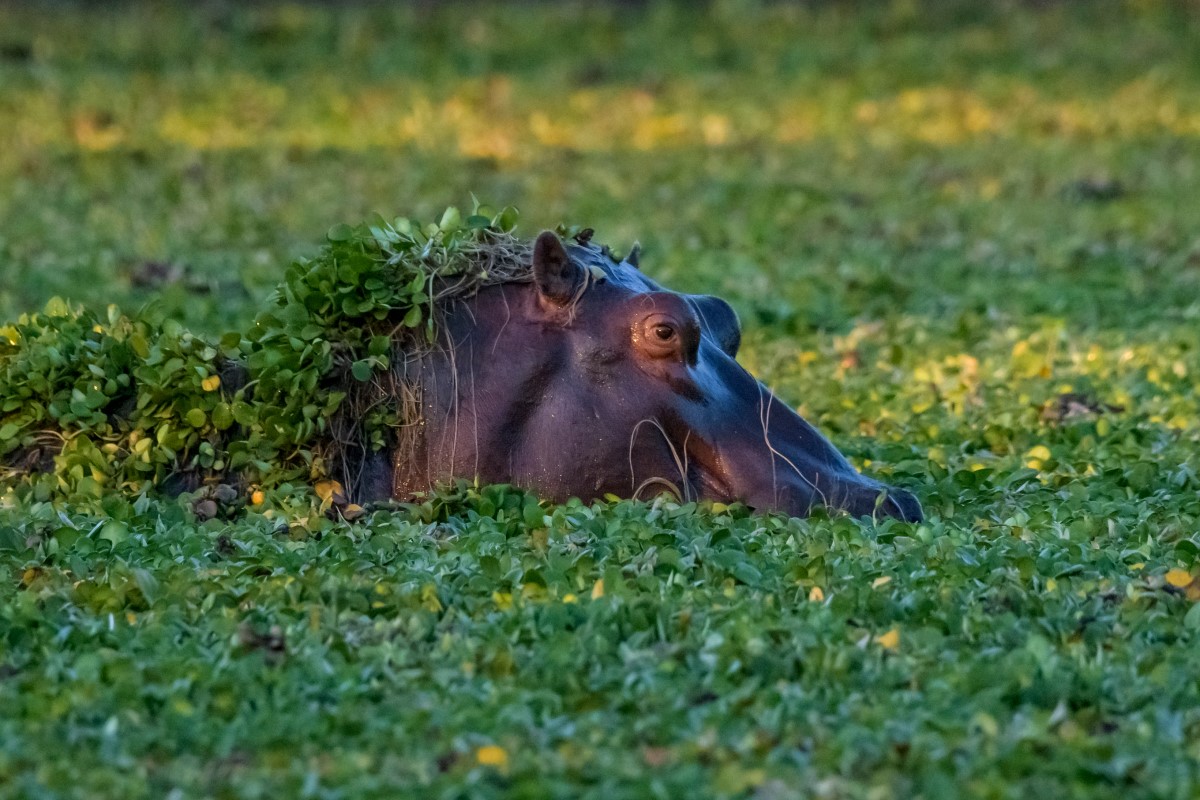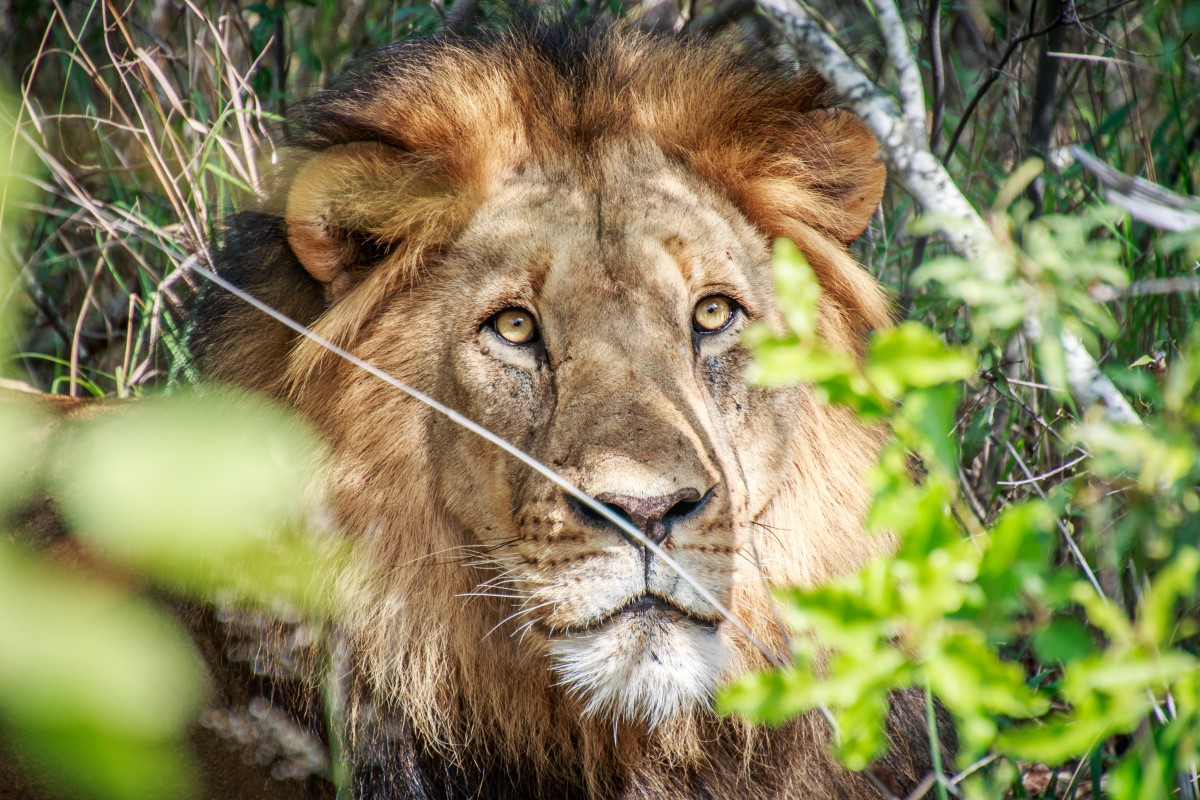You haven’t lived until you’ve seen the Big 5 on an African safari. This month we take an in-depth look at three of our favorite safari destinations. South Africa’s peerless Kruger National Park, Botswana’s majestic Okavango Delta and Zimbabwe’s breathtaking Victoria Falls. Prepare to be amazed…
Come face to face with the Big 5 in South Africa’s Kruger National Park
Covering an area the size of Israel, Kruger is the jewel in the crown of South African conservation. (Check out our recent article to find out more about its establishment and legacy.) Spanning 220 miles from north to south, the park traverses nine distinct biomes and is home to 145 mammal species including 110,000 impalas, 20,000 elephants and 1,600 lions. With two-dozen restcamps and over a thousand miles of road for self-drive game viewing, the national park is extremely popular among South Africans, especially during school vacations.
But Kruger also has a glitzier side… Starting about thirty years ago the private reserves and concessions on the fringes of the main park began to reach agreements with the government which saw fences between public and private land being torn down. This has increased the size of the conservation area by about ten per cent and ensured that animals – but not humans – are free to roam between the two. It has also worked wonders for the ecosystems in the smaller reserves, reclaiming the landscape to its pristine state.
SA Expeditions highly recommends staying in one of these private lodges as they offer the opportunity to explore one of the world’s great wilderness areas in comfort and privacy. Regardless of which lodge you choose (in South Africa, Botswana or Zimbabwe), you will stay in elegant African accommodations, go on twice daily game drives in an open vehicle with an expert ranger, and enjoy a top-notch culinary experience.
Section Type: standardWidthImageS
Spot wildlife roaming free right outside your window at the Sabi Sand Game Reserve. (Courtesy Photo: Dulini)

Of all the private reserves, the Sabi Sands Game Reserve is the oldest (it dates back to the 1950s) and most prestigious. It also happens to occupy a gorgeous tranche of bushveld which is traversed by two perennial rivers and many more seasonal ones. The huge, primal trees on the banks of the Sabi River are among the very best places on the planet to spy an elusive leopard. But you’ve got a pretty good chance of spotting the other members of the Big 5 too – not least the elephants which seldom stray far from the rivers.
When it comes to Sabi Sands lodges, we are huge fans of Dulini (stylish but laid-back and unpretentious feel; great for unwinding in a modern setting) and the slightly more refined Londolozi which offers sustainable living in super-plush surrounds: you can bike around camp, and buy produce from the onsite butcher to prepare at home. (As a member of the Relais & Châteaux group it goes without saying that Londolozi’s restaurants are pretty decent too.)
The Timbavati and Thornybush Private Reserves, some 50 miles to the north, are a few years younger than the Sabi Sands and they still boast a slightly wilder and more down-to-earth feel. The landscape is a bit more open, making it an utterly fantastic place to get up close and personal with lions. The Timbavati is renowned for its “white lions” – for some reason pale-coated lions are far more common here than anywhere else in Africa. But you’ve also got a great chance of seeing other animals including rhinos, leopards and cheetahs. In this neck of the woods, we can highly recommend Rockfig Safari Lodge – a luxurious new Timbavati offering with only six suites – and the slightly more rustic Shumbalala Game Lodge in Thornybush.
Drink in the otherworldly magnificence of Botswana’s Okavango Delta
The thousand-mile Okavango River – the fourth largest in southern Africa – brings life to the parched scrublands of Angola, Namibia and Botswana. But instead of emptying into the ocean, the Okavango fills a vast tectonic trough in the heart of Botswana’s Kalahari Desert. This giant inland oasis undergoes three cycles of rising and water levels every year, with water being its highest May thru September, when the surrounding landscape is at its driest.
This massive, swampy inland delta is a magnet for all creatures great and small, including one-sixth of the world’s elephants, a healthy population of lions which think nothing of hunting in shallow, crystal-clear waters, and a number of specially adapted ‘amphibious’ antelope species including the elegant sitatunga and the shy lechwe.
Section Type: standardWidthImageS
A pack of African wild dogs surround a buffalo calf on the Okavango Delta.

What really sets the Okavango apart from all other African safari destinations is the opportunity to view the Big 5 both on a conventional land-based safari and from a boat. It’s pretty hard to beat coming face to face with an elephant (or a fish eagle) while you silently explore the Delta’s narrow channels and inlets in a traditional mokoro (dugout canoe).
While we will gladly take travelers to the Okavango lodge of their choice, we recommend the Sanctuary portfolio for its focus on understated authenticity (backed up by healthy dollop of luxury and attention to detail). Chief’s Camp is located on the largest island in the Moremi Game Reserve, making it a great place to enjoy both land and water-based safaris. When the water levels are at their highest, the animals are concentrated on the island so you’ll have a fantastic chance to see lions, cheetahs and wild dogs.
Section Type: standardWidthImageS
Cruising by mokoro is one of the best ways to explore the Delta's narrow channels and inlets. (Courtesy Photo: Sanctuary Retreats)

Tiny, secluded Baines’ Camp, meanwhile, is a fantastic spot to experience the Delta at its fullest: while land-based game drives are definitely a thing at Baines’, it really comes into its own for water-based activities, both aboard mokoros and on motorized skiffs. If you can’t choose between the two we recommend spending a couple of nights at each – both offer exceptional game viewing opportunities and a truly unique safari experience.
Marvel at the majestic power of Zimbabwe’s Victoria Falls
One-and-a-half times wider than Niagara and twice as high, the awe-inspiring Victoria Falls on the border of Zimbabwe and Zambia is the largest curtain of falling water on the planet. It’s also worth pointing out that the Zambezi River practically teems with hippos, crocodiles and tigerfish and its banks are dotted with elephant, buffalo and giraffes. No surprise, then, that it’s one of the new Seven Natural Wonders of the World. (While we’re on the topic, Cape Town’s Table Mountain also cracked the nod.)
Although the Falls were first “discovered” by David Livingstone in 1855 (who promptly named them after the British monarch), they had of course been known to locals since time immemorial. The Tsonga people also come up with a far better name for the Falls, calling them Mosi-oa-tunya or “The Smoke That Thunders”.
At once massively overpowering and minutely delicate, it goes without saying that the Falls themselves are the main attraction. You will want to see them from as many angles as possible. On foot from both the Zimbabwean side (more popular but much better views of the falls) and the Zambian side (less crowded and the jumping point to the legendary Devil’s Pool) and the bridge which connects the two countries. By boat on a sunset cruise in the placid waters above the Falls or from a white-water raft in the tumultuous gorge below them. And from above on a once-in-a-lifetime helicopter trip.
Section Type: standardWidthImageS
The Devil's Pool is a natural rock swimming hole at the ledge of Victoria Falls - talk about the ultimate infinity pool! (Courtesy Photo: Victoria Falls River Lodge)

The Zimbabwean town of Victoria Falls has a lovely laidback vibe, with coffee roasteries, craft breweries, eateries and curios galore; but it can get a bit much after a while. This is why we advise staying at one of the really incredible properties on the outskirts of the town. The exclusive Victoria Falls River Lodge is located on the banks of the mighty Zambezi River and in the heart of the Zambezi National Park (it’s the only lodge inside the park). While the lodge is only a twenty-minute drive from town, you’ll feel a million miles away as you laze in the private plunge pool of your luxury tented suite or island treehouse suite. Rates include here include top notch grub, safari game drives, sundowner cruises and a tour of the Falls.
The magnificent Matetsi River Lodge is a little further afield – choose between a 45-minute drive or an unforgettable helicopter charter – in a private game reserve on the banks of the Zambezi. The rate here also includes game drives, boat cruises and canoeing trips and, if anything, the lodgings are even more high-end. The 4-bedroom private villa and the luxury family suites are especially popular among larger groups and you can even book out the entire camp if you want.
A note on logistics
Section Type: backgroundOnly
All of our preferred Kruger, Okavango and Victoria Falls lodges are accessible via direct daily flights from both Cape Town and Johannesburg. It’s also possible to fly direct from Kruger to the Victoria Falls (you’ll land at Livingstone in Zambia) and from the Okavango to Kasane which is a one-hour drive from Victoria Falls.
Section Type: cta
Hopefully this blog has convinced you that now is the time to make your safari dreams a reality. Check out our most popular safari adventures or contact a Destination Expert about building your own.

 Africa
Africa Africa
Africa